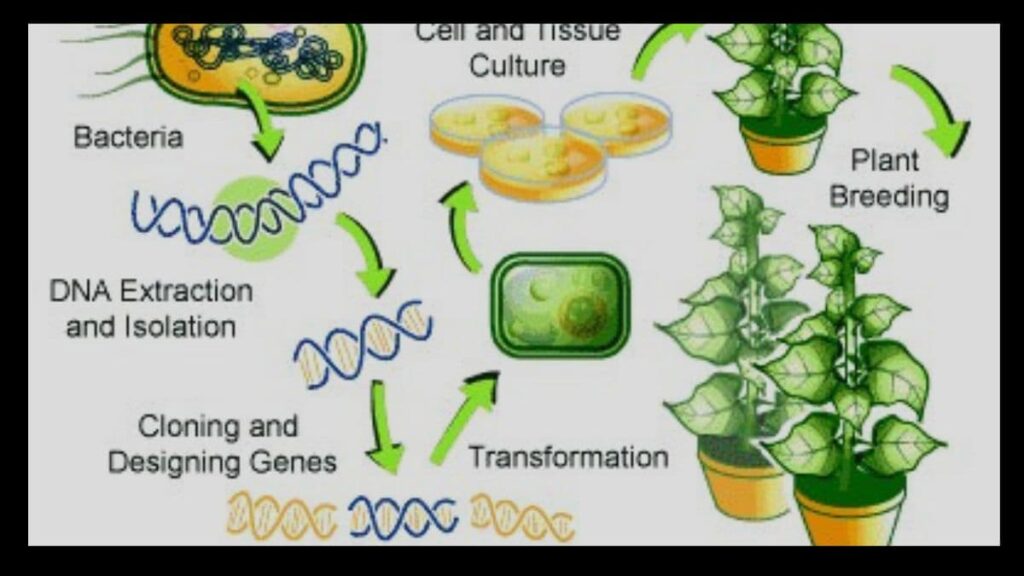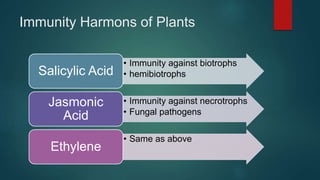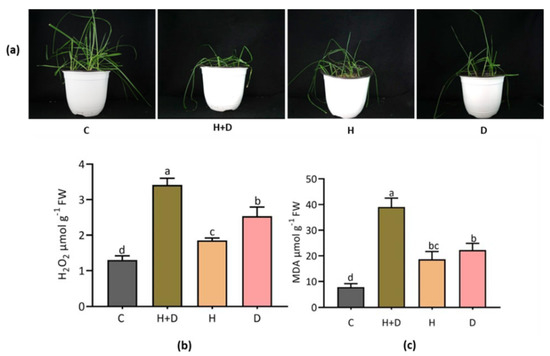
Understanding Plant Genetic Engineering: A Deep Dive
For millennia, humans have been shaping the plant world, selecting and breeding varieties to suit our needs. From the plumpest fruits to the most resilient crops, our agricultural landscape is a testament to this ongoing partnership. But in the last few decades, a new tool has emerged, one that allows us to directly manipulate the very blueprint of plant life: plant genetic engineering.
Plant genetic engineering, also known as plant biotechnology or plant genetic modification, represents a quantum leap in our ability to improve crops and other plant species. Instead of relying on the slow and sometimes unpredictable process of traditional breeding, genetic engineering allows us to introduce specific traits directly into a plant’s DNA. This opens up a world of possibilities, from enhancing nutritional content and increasing yields to making plants more resistant to pests, diseases, and harsh environmental conditions.
This comprehensive guide will delve into the fascinating world of plant genetic engineering, exploring its underlying principles, its diverse applications, and the ethical considerations that surround its use. We’ll unravel the complexities of gene transfer, examine the different techniques used to modify plant genomes, and discuss the potential benefits and risks associated with this powerful technology.
The Foundations of Plant Genetic Engineering: A Molecular Perspective
At its core, plant genetic engineering is based on our understanding of molecular biology and genetics. DNA, the molecule that carries the genetic instructions for all living organisms, is the key to this process. Genes, specific sequences of DNA, encode for particular traits, such as flower color, disease resistance, or drought tolerance.
Genetic engineering involves isolating a gene of interest from one organism (the donor) and inserting it into the genome of another organism (the recipient). This process is called gene transfer, and it can be accomplished using a variety of techniques. Once the gene is successfully integrated into the recipient plant’s DNA, it can be expressed, leading to the desired trait. The resulting plant is called a genetically modified (GM) plant, or sometimes a transgenic plant.
Methods of Gene Transfer: Tools of the Trade
Several methods are used to transfer genes into plants, each with its own advantages and disadvantages. Some of the most common techniques include:
- Agrobacterium-mediated transformation: This is the most widely used method for plant genetic engineering. Agrobacterium tumefaciens is a naturally occurring soil bacterium that has the ability to transfer DNA into plant cells. Scientists have harnessed this ability to deliver genes of interest into plant genomes. The desired gene is inserted into a modified version of the Agrobacterium‘s DNA, which is then transferred into plant cells during infection.
- Biolistic transformation (gene gun): This method involves coating tiny gold or tungsten particles with DNA and then firing them into plant cells using a gene gun. The particles penetrate the cell walls and membranes, delivering the DNA into the nucleus, where it can be integrated into the plant’s genome.
- Electroporation: This technique uses brief electrical pulses to create temporary pores in the cell membranes, allowing DNA to enter the cell. Electroporation is often used to transform plant protoplasts, which are plant cells that have had their cell walls removed.
- Microinjection: This method involves directly injecting DNA into plant cells using a fine needle. Microinjection is a precise but labor-intensive technique that is typically used for transforming individual cells or embryos.
- Viral vectors: Viruses can be used as vectors to deliver genes into plant cells. The desired gene is inserted into the viral genome, which is then used to infect plant cells. The virus replicates inside the plant cells, producing copies of the desired gene.
Beyond Gene Transfer: Genome Editing Technologies
While traditional genetic engineering involves introducing foreign genes into a plant’s genome, newer technologies, such as CRISPR-Cas9, allow scientists to precisely edit existing genes within the plant’s DNA. This opens up even more possibilities for improving crop traits.
CRISPR-Cas9 works like a molecular scalpel, allowing scientists to target and cut specific DNA sequences. The cell’s natural repair mechanisms then kick in, either disrupting the targeted gene or inserting a new sequence. This technology is revolutionizing plant breeding because it is more precise, efficient, and versatile than traditional genetic engineering techniques.
Applications of Plant Genetic Engineering: Transforming Agriculture and Beyond
Plant genetic engineering has a wide range of applications in agriculture, horticulture, and other fields. Some of the most significant applications include:
Enhancing Crop Yields
One of the primary goals of plant genetic engineering is to increase crop yields. This can be achieved by improving the plant’s ability to photosynthesize, resist pests and diseases, and tolerate environmental stresses such as drought and salinity. For example, genetically modified corn varieties that are resistant to the corn borer insect have significantly increased yields in many parts of the world.
Genetic engineering can also be used to improve nutrient utilization efficiency. Plants that are better able to absorb and utilize nutrients from the soil require less fertilizer, reducing environmental pollution and lowering production costs.
Improving Nutritional Content
Plant genetic engineering can be used to enhance the nutritional content of crops, addressing micronutrient deficiencies that affect millions of people worldwide. Golden Rice, for example, is a genetically modified rice variety that produces beta-carotene, a precursor to vitamin A. This crop has the potential to prevent vitamin A deficiency, a major cause of blindness in children in developing countries. Similarly, scientists are working on developing crops that are enriched in iron, zinc, and other essential nutrients.
Genetic engineering can also be used to reduce the levels of undesirable compounds in food crops. For example, scientists have developed genetically modified cassava varieties that have lower levels of cyanide, a toxic compound that can be harmful to humans.
Developing Pest and Disease Resistance
Pests and diseases can cause significant crop losses, leading to food shortages and economic hardship for farmers. Plant genetic engineering can be used to develop crops that are resistant to specific pests and diseases, reducing the need for pesticides and other control measures.
Bt crops, for example, are genetically modified to produce a protein from the bacterium Bacillus thuringiensis (Bt) that is toxic to certain insect pests. Bt crops have been widely adopted by farmers around the world, reducing the use of insecticides and benefiting the environment. Similarly, scientists have developed crops that are resistant to viral, fungal, and bacterial diseases.
Enhancing Herbicide Tolerance
Herbicide-tolerant crops are genetically modified to withstand the application of specific herbicides. This allows farmers to control weeds more effectively, reducing competition for resources and increasing crop yields. However, the use of herbicide-tolerant crops has also raised concerns about the development of herbicide-resistant weeds.
Improving Tolerance to Environmental Stresses
Climate change is posing significant challenges to agriculture, with increasing temperatures, droughts, and floods threatening crop production. Plant genetic engineering can be used to develop crops that are more tolerant to these environmental stresses.
For example, scientists have developed drought-tolerant corn varieties that can withstand prolonged periods of water stress. Similarly, researchers are working on developing crops that are tolerant to salinity, flooding, and extreme temperatures.
Producing Pharmaceuticals and Industrial Products
Plant genetic engineering is not limited to improving food crops. It can also be used to produce pharmaceuticals, industrial enzymes, and other valuable products in plants. This approach, known as molecular farming, offers a cost-effective and sustainable way to produce these compounds.
For example, scientists have developed plants that produce antibodies, vaccines, and other therapeutic proteins. Similarly, plants can be engineered to produce biofuels, bioplastics, and other industrial products.
Ethical and Regulatory Considerations: Navigating the Complexities
While plant genetic engineering offers tremendous potential for improving agriculture and addressing global challenges, it also raises ethical and regulatory concerns. These concerns include the potential impact on human health, the environment, and socioeconomic issues.
Human Health Concerns
One of the primary concerns about genetically modified crops is their potential impact on human health. Some people worry that GM foods may be allergenic or toxic. However, numerous studies have shown that GM foods that are currently available on the market are safe for human consumption.
Regulatory agencies, such as the Food and Drug Administration (FDA) in the United States and the European Food Safety Authority (EFSA) in Europe, conduct rigorous safety assessments of GM crops before they are approved for commercialization. These assessments include evaluating the potential for allergenicity, toxicity, and other adverse health effects.
Environmental Concerns
Another concern about plant genetic engineering is its potential impact on the environment. Some people worry that GM crops may harm beneficial insects, lead to the development of herbicide-resistant weeds, or reduce biodiversity.
Studies have shown that some GM crops can have negative impacts on certain non-target organisms. For example, Bt crops can harm monarch butterflies if they feed on pollen from Bt corn. However, the overall impact of GM crops on the environment is complex and depends on a variety of factors, including the specific crop, the environment in which it is grown, and the management practices used.
Regulatory agencies assess the potential environmental impacts of GM crops before they are approved for commercialization. These assessments include evaluating the potential for harm to non-target organisms, the development of herbicide-resistant weeds, and the impact on biodiversity.
Socioeconomic Concerns
Plant genetic engineering also raises socioeconomic concerns. Some people worry that GM crops may benefit large corporations at the expense of small farmers. Others worry that GM crops may lead to the displacement of traditional farming practices.
The socioeconomic impacts of GM crops are complex and depend on a variety of factors, including the specific crop, the regulatory environment, and the market structure. Some studies have shown that GM crops can benefit small farmers by increasing yields and reducing the need for pesticides. However, other studies have shown that GM crops can lead to increased dependence on large corporations and the displacement of traditional farming practices.
Regulation of Plant Genetic Engineering
Plant genetic engineering is regulated by a variety of agencies around the world. In the United States, the FDA, the Environmental Protection Agency (EPA), and the United States Department of Agriculture (USDA) all have a role in regulating GM crops.
The regulatory framework for plant genetic engineering varies from country to country. Some countries have strict regulations that require extensive testing and labeling of GM foods. Other countries have more lenient regulations.
The regulation of plant genetic engineering is an ongoing process, and the regulatory framework is constantly evolving as new scientific information becomes available.
The Future of Plant Genetic Engineering: A Vision for Sustainable Agriculture
Plant genetic engineering holds tremendous promise for the future of agriculture. As the world’s population continues to grow, we will need to produce more food with fewer resources. Plant genetic engineering can help us achieve this goal by increasing crop yields, improving nutritional content, and reducing the need for pesticides and fertilizers.
However, it is important to proceed cautiously and to address the ethical and regulatory concerns associated with this technology. We need to ensure that GM crops are safe for human health and the environment, and that they benefit all members of society, not just large corporations.
With careful planning and responsible implementation, plant genetic engineering can play a vital role in creating a more sustainable and equitable food system for all.
Emerging Trends in Plant Genetic Engineering
Several exciting trends are emerging in the field of plant genetic engineering:
- Genome editing: As mentioned earlier, genome editing technologies, such as CRISPR-Cas9, are revolutionizing plant breeding by allowing scientists to precisely edit existing genes within the plant’s DNA. This opens up new possibilities for improving crop traits and developing novel varieties.
- Synthetic biology: Synthetic biology involves designing and building new biological systems and components. This approach can be used to create plants with entirely new capabilities, such as the ability to produce novel pharmaceuticals or industrial products.
- Data-driven agriculture: The use of big data and artificial intelligence is transforming agriculture, allowing farmers to make more informed decisions about planting, irrigation, and fertilization. Plant genetic engineering can be integrated with data-driven agriculture to optimize crop production and improve resource utilization.
- Sustainable agriculture: Plant genetic engineering can play a key role in promoting sustainable agriculture by reducing the need for pesticides and fertilizers, improving water use efficiency, and enhancing soil health.
Challenges and Opportunities
Despite its potential, plant genetic engineering faces several challenges:
- Public perception: Public perception of GM crops remains a significant challenge. Many people are skeptical about the safety and environmental impacts of GM foods. It is important to engage in open and transparent communication about the benefits and risks of plant genetic engineering to build public trust.
- Regulatory hurdles: The regulatory framework for plant genetic engineering can be complex and time-consuming. Streamlining the regulatory process can help to accelerate the development and commercialization of new GM crops.
- Access and equity: It is important to ensure that the benefits of plant genetic engineering are accessible to all farmers, regardless of their size or location. This requires addressing issues related to intellectual property rights, technology transfer, and access to markets.
By addressing these challenges and embracing emerging trends, plant genetic engineering can contribute to a more sustainable, resilient, and equitable food system for the future.
Conclusion: Embracing the Potential, Mitigating the Risks
Plant genetic engineering is a powerful tool that has the potential to transform agriculture and address some of the world’s most pressing challenges. By understanding the underlying principles, exploring its diverse applications, and carefully considering the ethical and regulatory issues, we can harness the power of plant genetic engineering to create a more sustainable and equitable future for all.
As we continue to unlock the secrets of the plant genome, it is crucial to proceed with caution and responsibility, ensuring that this technology is used in a way that benefits both humanity and the environment. Only through thoughtful deliberation and collaborative action can we realize the full potential of plant genetic engineering and create a world where everyone has access to safe, nutritious, and sustainable food.

